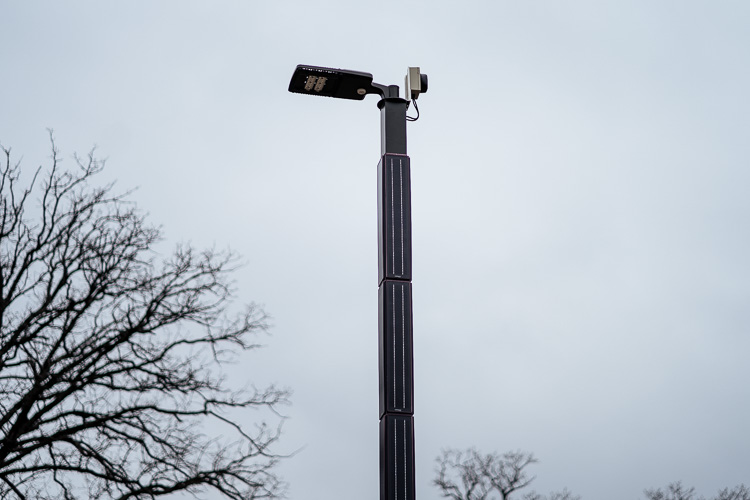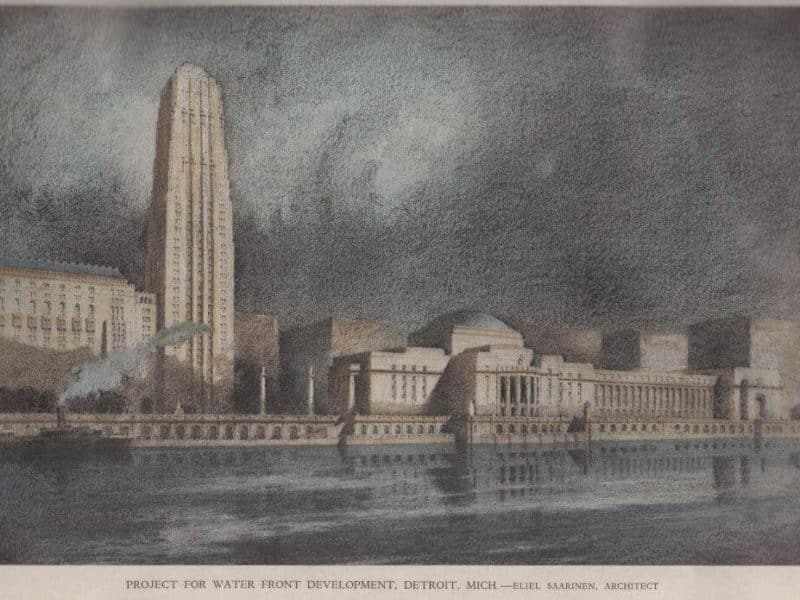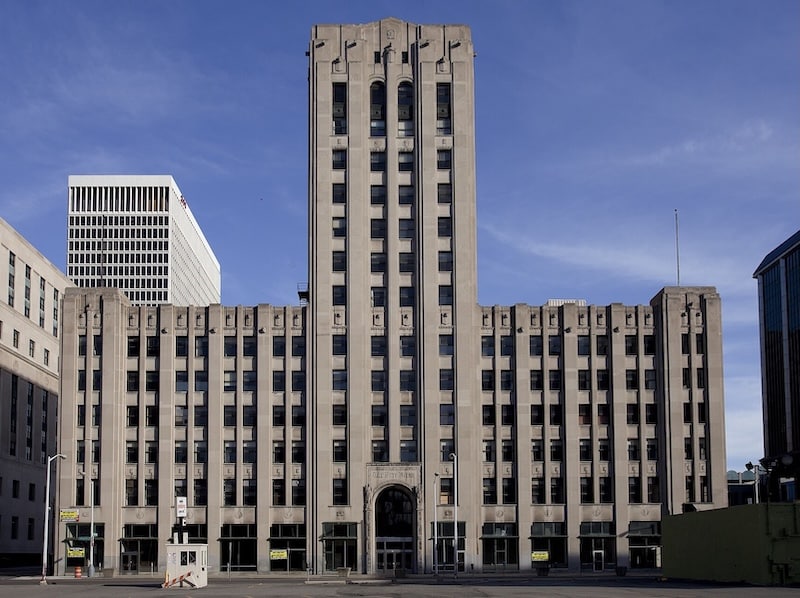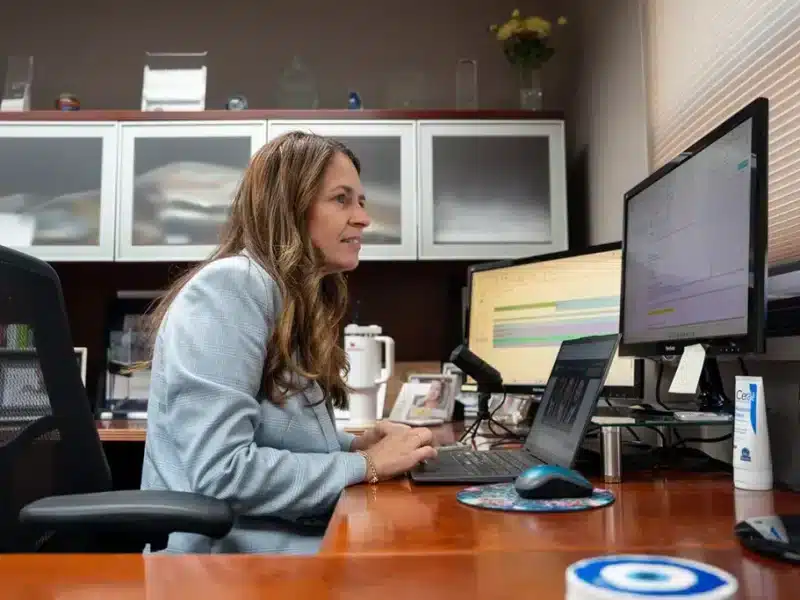This hip-hop entrepreneur is hoping to build a smart village in his hometown of Highland Park
Juan Shannon is in the process of turning the grounds of Thompson Elementary School — abandoned for two decades — into Parker Village, a $5 million smart neighborhood and urban farming operation.
Buena Vista Street in Highland Park is in pretty rough shape. The road is potholed to nearly gravel. Abandoned houses and overgrown lots line the street.
But one remarkable transformation on the block carries the promise of a new direction for the economically-challenged city. Developer Juan Shannon is in the process of turning the grounds of Thompson Elementary School — abandoned for two decades — into the centerpiece of a $5 million smart neighborhood and urban farming operation called Parker Village.
Although work on the social enterprise is still in its earliest stages, the site is already home to a smart solar street light that was installed with the help of a grassroots group called Soulardarity. Work has also begun on a hoop house that should be operational this coming spring and solar-powered irrigation and tool shed on the site.
The shed is decorated with a mural painted by a young artist named Waleed Johnson. It presents a landscape of Highland Park’s past and potential future separated by two hands cupping a growing seedling.
“The left side of the mural represents some of the history of Highland Park: the city of trees, our mascot the polar bear, the Ford plant, the Model T and the Davison Expressway,” Shannon says. “Then it bridges the gap and shows the growth and the planting of the seed that are things we’re going to be doing here in Parker Village: the renewable energy, the technology, the healthy food, and aquaculture.”
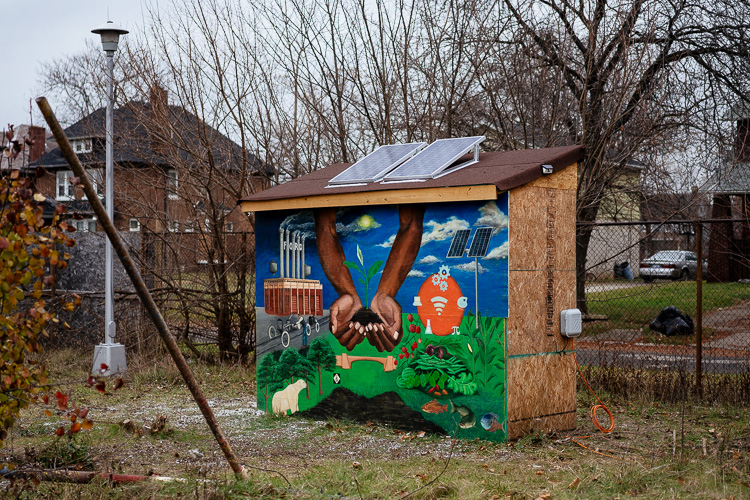
Ultimately, the former school will take on the role of a community resource center. The nearly 24,000-square-foot facility will house an events center, co-working space, STEAM (Science, Technology, Engineering, Arts and Math) lab, and serve as an incubator for new businesses. The building will also be the headquarters for Shannon’s company, Modern Tribe Communications, as well as contain two studios and a broadcast area.
Shannon has been collaborating with architect Paul Bierman-Lytle, known nationally for his sustainable designs, to make the structure energy efficient and sustainable. A solar array is being planned for the roof, and wind and geothermal energy technologies are also being considered for the facility.
An aquaponic urban farm, consisting of two hoop houses linked to a fish barn which will help irrigate crops, will be located in a lot adjacent to the community center. Blue infrastructure will collect rainwater and melting snow that will be used to irrigate the gardens and utilize grey water for toilet flushing and other functions at the facility. There will also be a garden cafe on the site that should be operational next spring.
The cafe will offer a variety of healthy meat and vegan options, which the interested can get an advance taste of at a special event being held at TechTown on Jan. 17.
Shannon also plans to create a residential community around the school grounds. Right now, he’s rehabbing an energy-efficient single family home that will be occupied next March, building a four-family-unit townhouse complex from the ground up, and planning the construction of a net-zero townhouse and an electric vehicle service station.

If negotiations with the city of Highland Park are successful, Shannon also wants to build 17 additional net-zero single family homes in the neighborhood.
Highland Park City Council President Rodney Patrick is a strong backer of the smart neighborhood.
“Juan Shannon is on the cutting edge of something special with Parker Village, especially in the area of green technology,” says Patrick. “Projects like this will help us to be an urban center in renewal again, and we want a chance to be part of that. “
From hip hop to smart village
If the name Juan Shannon sounds rings a bell, there’s a reason for that. He’s a heavy hitter on the local hip-hop scene who’s been involved in the careers of tons of local music acts, including household names like Eminem, Proof, and J. Dilla.
“Juan Shannon was one of the few entrepreneurs who stepped into the vibrant hip hop scene in the mid 1990s and used his own resources to create a platform for up and coming artists,” says hip hop scholar Khalid el-Hakim, who operates the Black History 101 Mobile Museum and once managed Proof.
“Juan was the executive producer of a classic project called Detroit Hip Hop Soundtrack, Vol. 1,” he adds. “His company Modern Tribe was a one stop shop for recording, manufacturing, distribution, promotion, and the other support artists needed to get their product out. He has always been about uplifting the creative arts community and his current venture in Highland Park is a direct reflection of his commitment.”
Shannon, a Highland Park native, got his first taste of the music world in high school playing with a funk/rock/jazz group called For Bad Girls Only (FBGO). For college, he double majored in music business management and music composition and theory at Wayne State University.
His time as multi-instrumentalist playing with FBGO gradually evolved into him taking on more of a production and management role. In the early 1990s, he opened up the Mecca Showcase Cafe downtown with a partner. The venue was the first in Detroit to book the Wu Tang Clan and quickly became a lightning rod for the local rap scene. It closed in the mid-90s, with an enormous rave by techno star Richie Hawtin.
Shannon followed that up by opening up Phat House, a retail music outlet, at Seven Mile and Woodward. He launched his multi-media company Modern Tribe Communications in 1997.
“At one point between ’97 and ’99, there was nothing in hip-hop that happened in Detroit that we were not involved in,” Shannon says. “It didn’t matter if it was your grandmother’s basement or Joe Louis Arena; we were there.”
Shannon eventually realized that regardless of where media productions take place, they still need a facility for editing and marketing. So he purchased the grounds of Thompson Elementary with the goal of making it into a media production facility.
He found out about the possibilities of green technology on a trip to the business incubator Green Garage in Midtown, where he learned the building was covering its energy costs for $400 a year through energy efficiencies and resources like solar power.
“The necessity of being able to pay the utilities started the journey down to renewable energy,” Shannon says. “I starting looking at how can we design for the future? How can we make things better?”
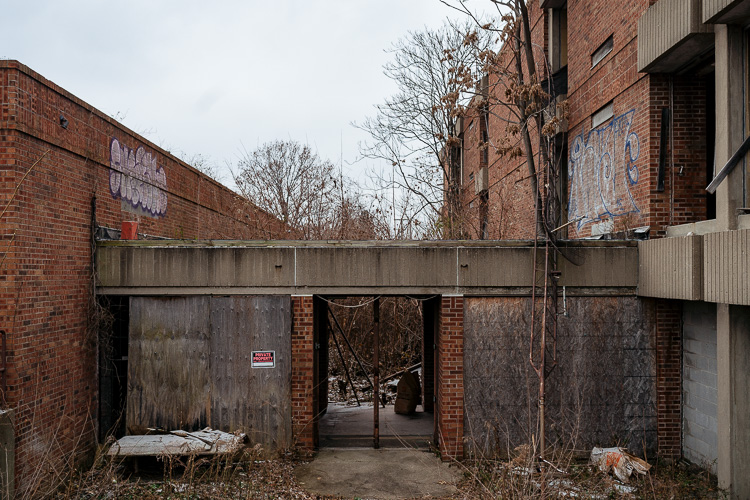
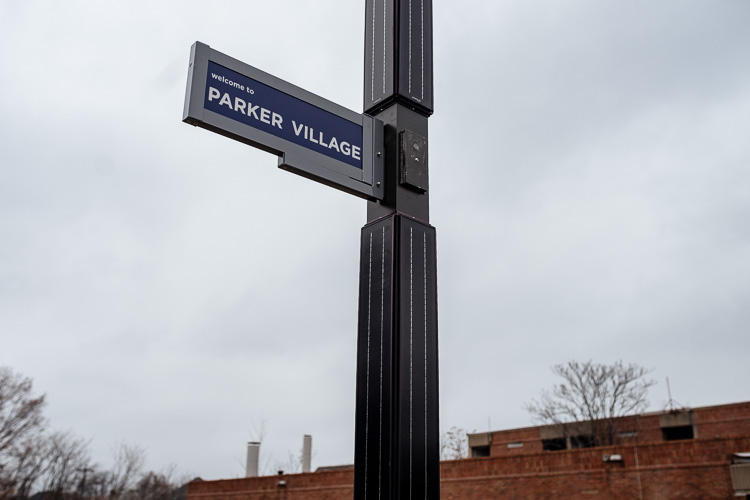
He hit upon the idea of building a community resource center in the heart of a smart neighborhood. It’s a concept he believes will create much-needed employment and educational opportunities in Highland Park, a city that’s been hit hard by deindustrialization, depopulation, and disinvestment. In more recent years, it’s had nearly all its street lights repossessed and suffered from levels of lead poisoning on par with Flint.
Shannon estimates Parker Village will create about 150 permanent jobs and many more temporary ones. What’s more, the STEAM lab will serve as a valuable teaching tool for both youth and adults.
Shannon expects Parker Village to encourage tourism and bolster the city’s tax base by creating new housing options. In doing so, he hopes to offer a model that is both welcoming to new residents and respectful of those who already live in Highland Park.
“We don’t have to be Midtown 3.0,” he says. “We don’t want to overprice and gentrify and kick people out who stay here. I just want to see Highland Park return and be respected and have its own identity.”
As ambitious as creating one’s own smart neighborhood sounds, Shannon can’t help but look towards the horizon too. He’s interested in dedicating a certain amount of profits each year from the social enterprise into broader investments in Highland Park. And he even ponders the possibility of helping fund a new high school somewhere down the road — the city’s last high school shuttered in 2014.
Beyond that, he’s hopeful the smart village he’s creating will serve as a model and inspiration for others around the city.
“I think we’re going to be the firestarter to a lot of future development and other things here in the city,” he says.
This article is part of “Detroit Innovation,” a series highlighting community-led projects that are improving the vitality of neighborhoods in Detroit, while recognizing the potential of residents to work with partners to solve the most pressing challenges facing their communities.
The series is supported by the New Economy Initiative, a project of the Community Foundation for Southeast Michigan that’s working to create an inclusive, innovative regional culture.
Photos by Nick Hagen.


